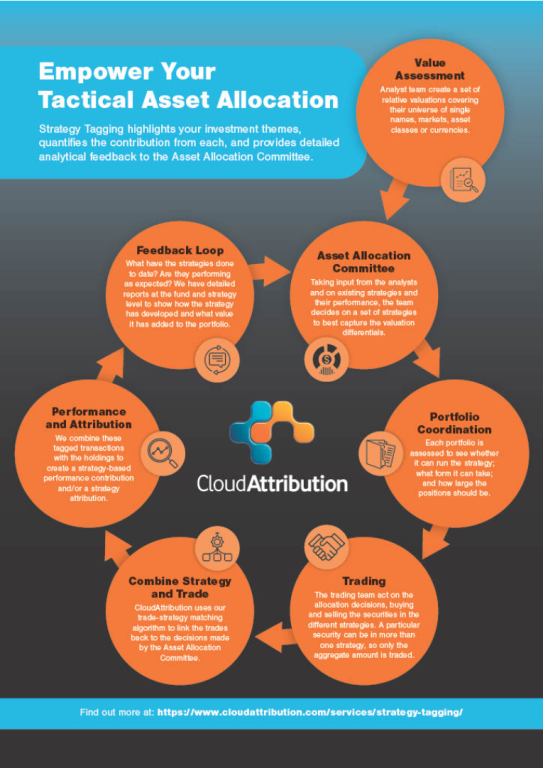View performance by strategy rather than sector
Absolute-return portfolios are frequently managed using a combination of derivatives and long/short exposures as well as traditional assets. They may not have a benchmark but they make up for it in the complexity of the strategies employed; these can cross asset classes to cover equities, fixed income, currency and commodities. The approach employed may involve relative value within asset classes and between them. Traditional sectors are rarely granular enough or flexible enough.

Transaction-based tagging
We allow the user to tag assets on transaction. The subsequent holdings can then be tracked through time. The system handles any cash flows, such as dividends, margins or interest automatically; all asset classes can be tagged. In addition we allow the user to tag assets that don’t actually exist in a portfolio because they are used in an equal and opposite size in two strategies.
Each transaction can be allocated to one or more strategies with the tagging screen giving full information about the size of the position and the size within the strategy.

Tracking performance and strategy exposures through time
Once the tagging has been completed, the performance can be viewed grouped by traditional sectors or by strategy. In this way the performance of each strategy can be analyzed and the reasons for that performance, good or bad, can quickly be identified. In a complex portfolio being able to do that quickly offers a great advantage.
Our reporting engine can also be used to provide more information about each strategy, identifying the constituents, exposures and the source of performance through time. This can be done for all strategies at once or for individual strategies on request.
Overall, strategy tagging provides the absolute-return portfolio managers a flexible new way to track their portfolios.
